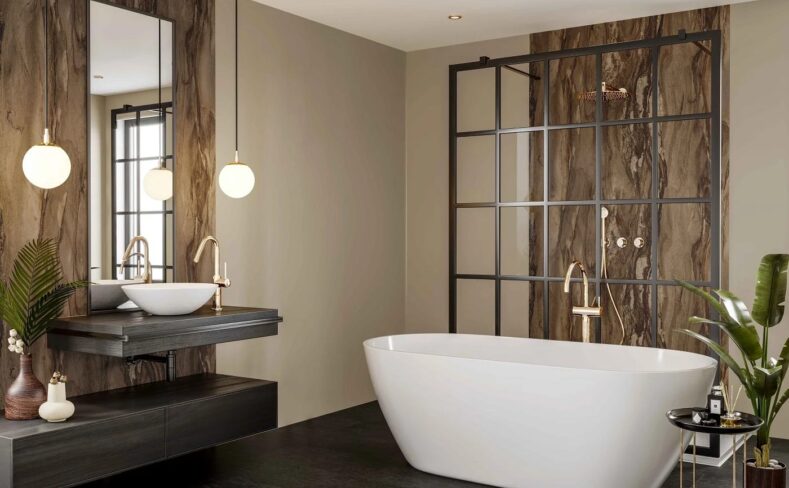
How to Choose Waterproof Bathroom Wall Panels?
Bathroom wall panels, also known as shower panels, wet wall cladding or shower PVC shower wall panels, are a cost-effective waterproof tile alternative. They’re easier to clean and easier to install, and waterproof bathroom wall panels are becoming an increasingly popular way to transform a bathroom easily and effectively. From bold designs to subtle textures, there are tons of different designs, thicknesses and sizes and a whole range of bathroom wall panels to choose from.
With our helpful buying guide, we’ll tell you everything you need to consider when choosing bathroom wall panels, and give you some top style tips on how, what and where bathroom panels should be, and how they can transform your bathroom , kitchen and even living space.
Leading master bathroom styles after renovation in the United States in 2022
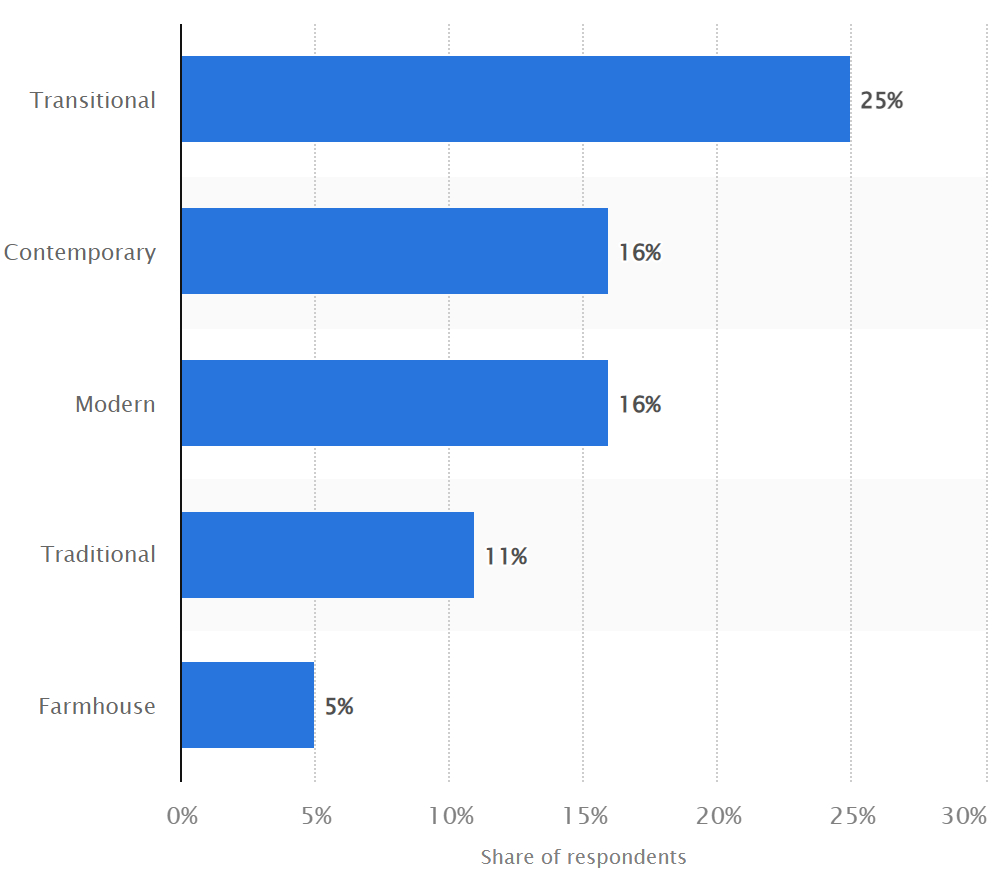
Source: https://www.statista.com/master-bathroom-renovation-styles-us/
Details: United States; Houzz; July 8 to July 26, 2022; 2,570 respondents; 18 years and older; Houzz users who had completed a bathroom remodel or addition project in the past 12 months, or homeowners currently working on one or planning to start one in the next three months.; Email survey
This statistic depicts the leading master bathroom styles after renovation in the United States in 2022. The survey revealed that about a quarter of U.S. respondents changed to a transitional styled master bathroom after renovation, making it the most popular style in 2022.
I. Is paneling a good idea for a bathroom?
Yes! PVC bathroom wall panels are 100% waterproof and require no grouting. This helps reduce condensation and prevents mold on the panels. The bathroom panels are also super easy to clean without the harsh chemical cleaners that are sometimes required to remove mold and water marks. Combined, they create an extremely clean and hygienic environment.
II. What types of bathroom wall panels are there?
Waterproof bathroom wall panels are available in a variety of materials. Each has its own properties that have both advantages and disadvantages. It’s only natural that you want to know all of this information to make an informed decision.
There are 3 main types of bathroom wall panels, PVC, acrylic and pressure laminated vinyl on a MDF core. So, which one is right for your bathroom? Below we explore the pros and cons of each of the 3 different types of bathroom wall panels.
1. PVC shower panel
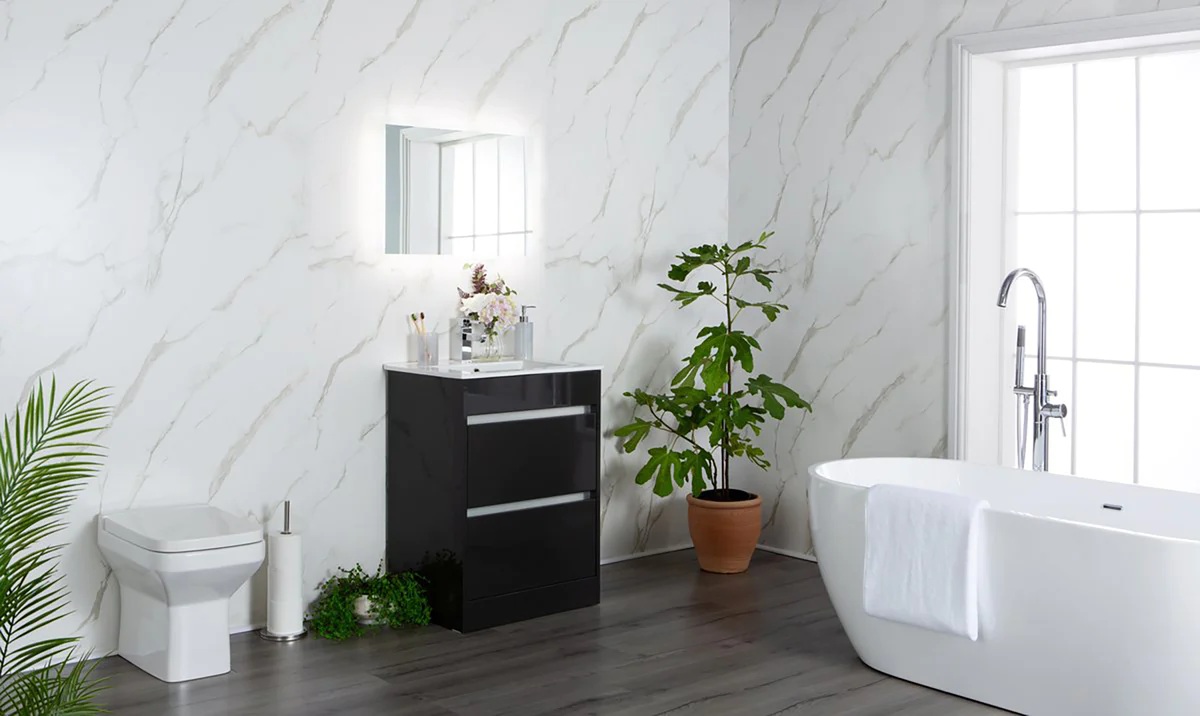
Source: https://www.floorstowalls.co.uk/the-largest-range-of-pvc-bathroom-wall-panels
Advantages
(1) Structure
PVC is a synthetic plastic, PVC shower wall panels are strong and lightweight, typically 6mm thick and have a tongue and groove design. This means large walls can be covered without having to attach trim.
The panels have a hollow structure that allows the material to bend slightly. PVC sheets tend to be lighter than acrylic or MDF sheets. That’s because the core is not a solid, but a vertical cuboid structure. See the figure below.
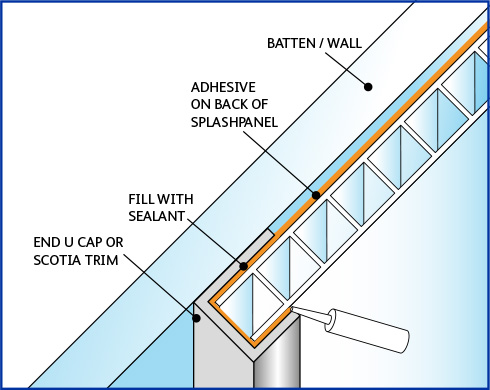
(2) Appearance
PVC shower wall panels are watertight and sealed to provide a seamless and stylish finish. There are tons of colors to choose from, with wood, stone and quartz designs being more popular as they offer a clean and modern finish without the real cost (or weight)!
(3) Cost
PVC bathroom wall panels tend to be the least expensive and offer the most space for bathroom updates due to their ability to be made in rigid or flexible form. If you are on a budget, PVC shower wall panels are ideal as they allow you to experience the desired natural textured look at a much lower price.
(4) Maintenance
When used in high-humidity areas like bathrooms, PVC shower wall panels are very hard wearing and super easy to clean—just wipe with a cloth. They require little maintenance to stay fresh.
(5) Waterproof
One of the most useful aspects of PVC is its water resistance. This is ideal for bathrooms where water seeping into the walls can cause mold and expensive damage.
Disadvantages
Due to the honeycomb structure, the PVC shower wall panels may only be 1mm thick in some places and may be damaged if subjected to impact. This results in time-consuming and expensive repairs. PVC shower wall panels must be properly installed to ensure that they are waterproof and maintain their effectiveness over the long term. Compared to solid core panels, PVC bathroom wall panels offer a limited choice of colors and finishes.
2. Acrylic shower panel
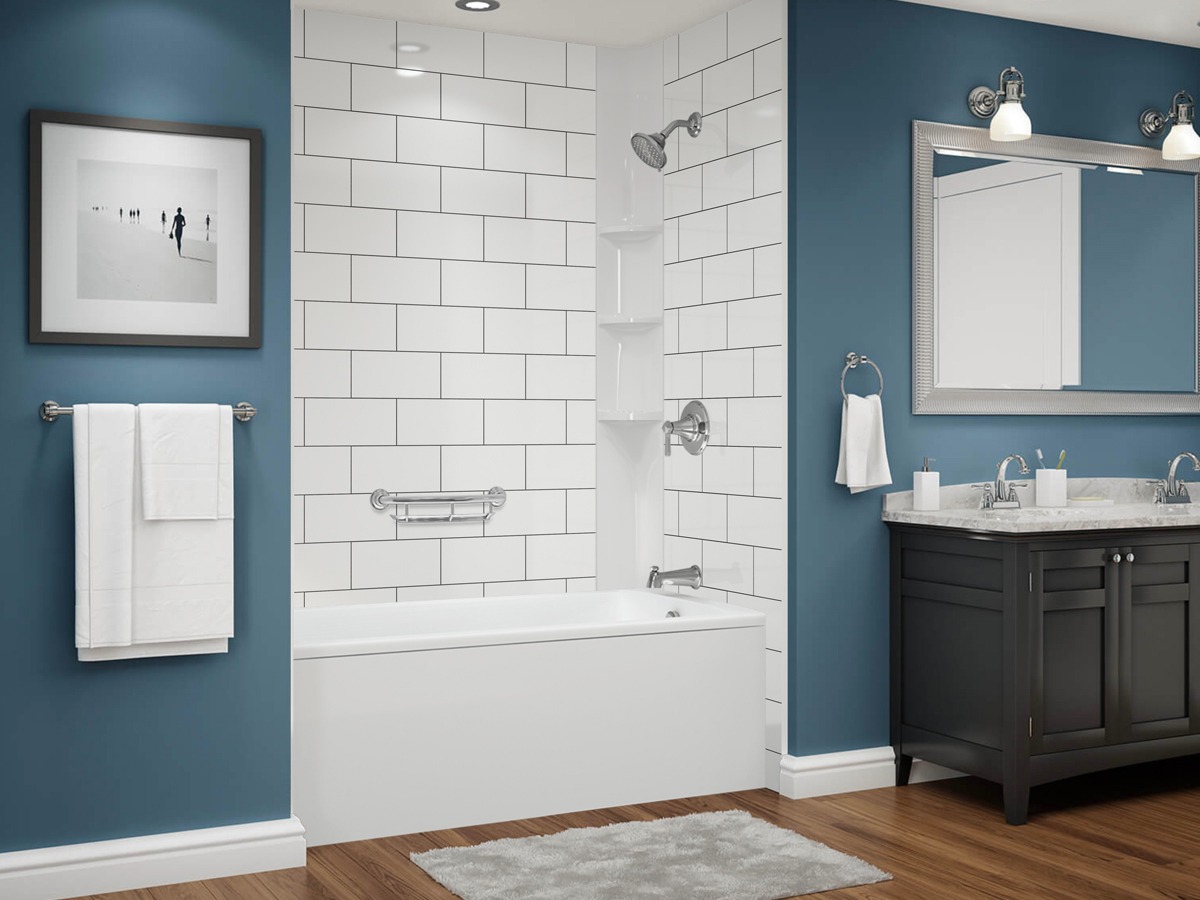
Source: https://bellastonesystems.com/
Advantages
(1) Structure
Acrylic is another synthetic material used in bathrooms. Visually, it has similar properties to PVC. However, the panels are generally thinner, and their composition actually makes them denser. Due to its dense, strong construction, acrylic shower wall panels resist damage from impacts or bumps and will stand the test of time!
Compared to PVC, acrylic shower panels are heavier and more expensive due to the layered material. Although heavier, acrylic shower panels are thinner, typically around 4mm thick. Although they are thinner, they are generally heavier than PVC shower wall panels due to their denser acrylic structure.
(2) Appearance
Popular for their smooth, delicate surface, acrylic shower panels have a finish similar to glass, offering a luxurious, high-gloss finish. Acrylic bathroom wall panels often come in bold and blocky colors. The exterior can sometimes appear translucent. Many people like the effect of acrylic because of its glass-like appearance. They can transform your space as their polished finish reflects light around the room, making it appear larger!
(3) Installation
Acrylic shower panels can be cut on site using both hand and power tools, reducing installation time and meaning no formwork service is required, unlike glass splashbacks, getting your bathroom or kitchen splashback back into working order quicker.
Disadvantages
Prices Compared to PVC, acrylic shower wall panels are more expensive than PVC or solid core panels, and due to their weight, delivery and installation can be more expensive, meaning they are also more expensive to deliver. Acrylic shower panels do not have a tongue and groove option, which means connecting strips are required when covering large areas.
Acrylic shower wall panels are better for small sections, for example if you only want to use the wall panels in one part of the bathroom, such as the shower. Acrylic sheets can be difficult to cut and require extra precautions and equipment to install without cracking or crumbling. Also, make sure to read and follow the installation instructions when installing.
3. MDF shower panel
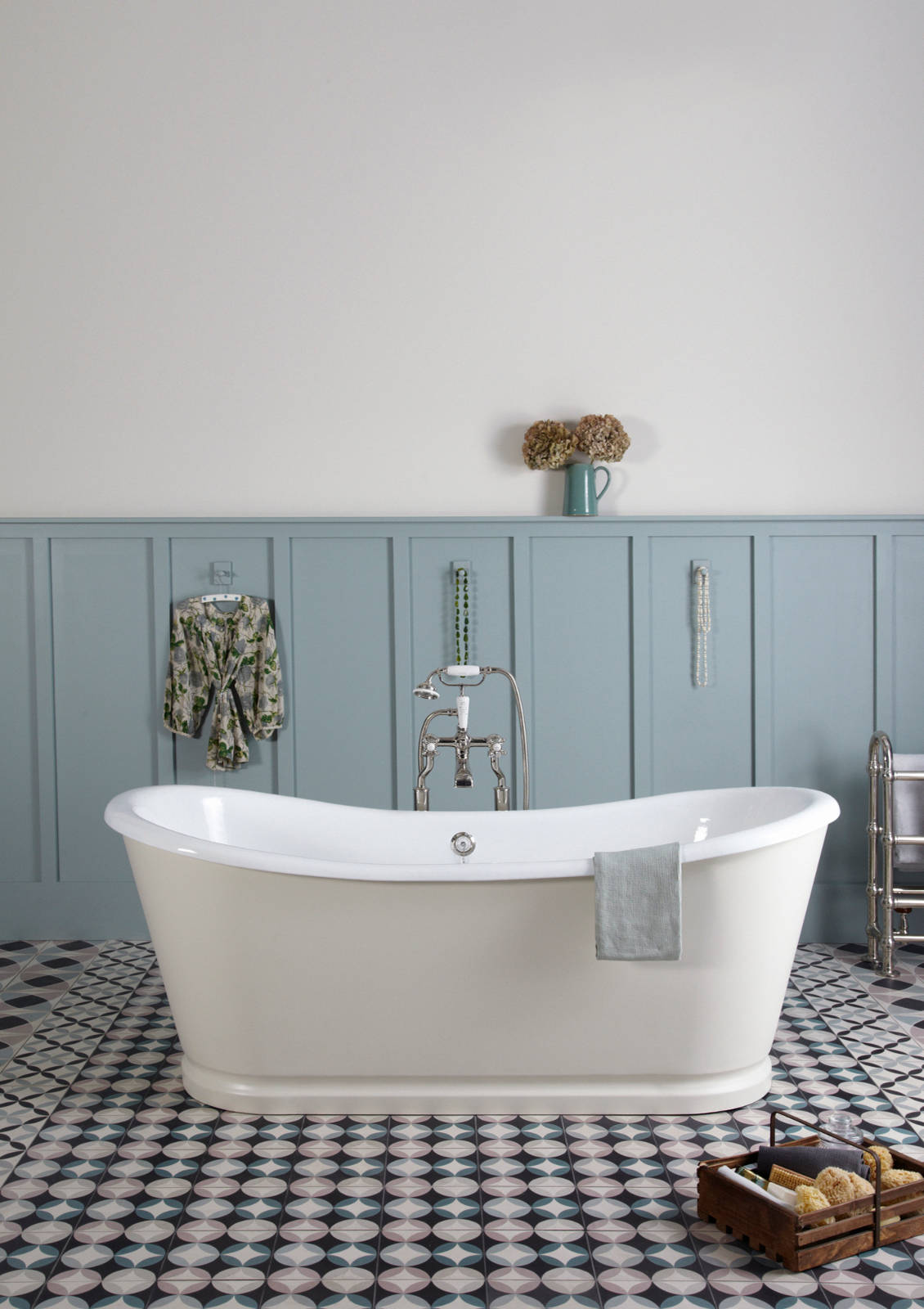
Source: https://www.houzz.co.uk/a-beginners-guide-to-installing-wall-panelling
Advantages
(1) Structure
MDF constructed waterproof bathroom wall panels are the thickest, heaviest and possibly the best constructed shower panels available. MDF panellings are made from plywood or MDF. This material is covered by a waterproof laminate for durability. The MDF core has a high pressure laminated backing on both sides making the panels completely waterproof.
Laminated MDF panels are the thickest and heaviest in their class. Their core material is sealed in waterproof laminate, ranging in thickness from 10mm to 10.5mm.
The plywood body is high pressure laminated on both sides for maximum strength and protection from heat and moisture. Due to its sturdy construction, laminate shower wall panels are guaranteed to provide solid support for your walls and showers and can be installed over existing tiles, painted walls or surfaces!
(2) Appearance
They come in a variety of designs, from classic marble to contemporary designer patterns, and you can even have custom images that are personal and unique to you.
(3) Installation
Available with no lip or tongue and groove options, the multi-panel wall panels are simple to install and can be installed freely on larger walls without the need to attach trim.
Disadvantages
Costs are high and you’ll need to have deep pockets as bespoke shower panels can cost upwards of £800 per panel.
III. Key factors to consider when purchasing bathroom wall panels
Each of the above wall panel materials has advantages and disadvantages for bathroom use. When choosing the best option, there are a few things to consider in order to find the right solution for your space.
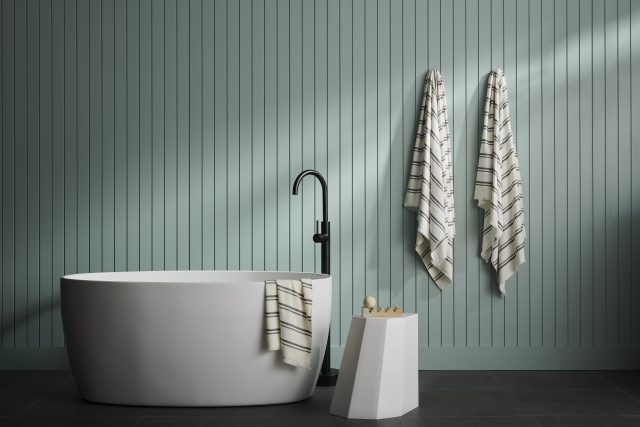
Source: https://theinteriorsaddict.com/new-water-resistant-wall-panels-from-laminex
1. Design
Colour, design and texture work together to create the perfect bathroom interior. PVC, acrylic and MDF are available in various finishes according to your taste. One of the best all-rounders is PVC because it offers a variety of aesthetics. Choose from wood or stone effect panels. Or opt for blocky colors and a luxurious marble look. Acrylics and the like often offer bold and translucent surfaces that can sometimes limit design ideas.
2. Durability
PVC, acrylic, and MDF all offer some level of durability. This factor usually comes down to quality. Not every panel is the same, so check thickness and composition for the best option. For example, high-quality PVC panels are not only hard wearing, but also have a scratch-resistant surface.
3. Water resistance
One of the most important aspects of bathroom panels is water resistance. PVC and acrylic are 100% waterproof. In contrast, MDF wall panels will warp if water seepage occurs.
4. Installation
Do you install bathroom panels yourself or hire a professional to install them? If DIY projects are your answer, then PVC panels are perfect. They are easy to install and use a tongue and groove system that provides a seamless finish. Plus, the larger sheet ensures easy installation with no visible seams. The end result is the same great quality without the high installation costs or stressful process.
5. Easy to clean
Bathrooms are notoriously frustrating when it comes to moisture and mildew resistance. Therefore, when everyone chooses bathroom boards, cleaning and maintenance have become the focus of consideration. The above three materials are easy to clean. However, some materials may require specific cleaning products to avoid soiling the surface. This is especially important with MDF panellings where damage to the material can lead to water ingress.
6. Cost
Cost is a major factor when renovating a bathroom, which is why it’s worth comparing the costs of the three available options. Acrylic is a more expensive option, while solid board varies by quality.
One of the most cost-effective options is PVC. High-quality panels are affordable, with no compromises on durability or water resistance.
Quick Quotation



